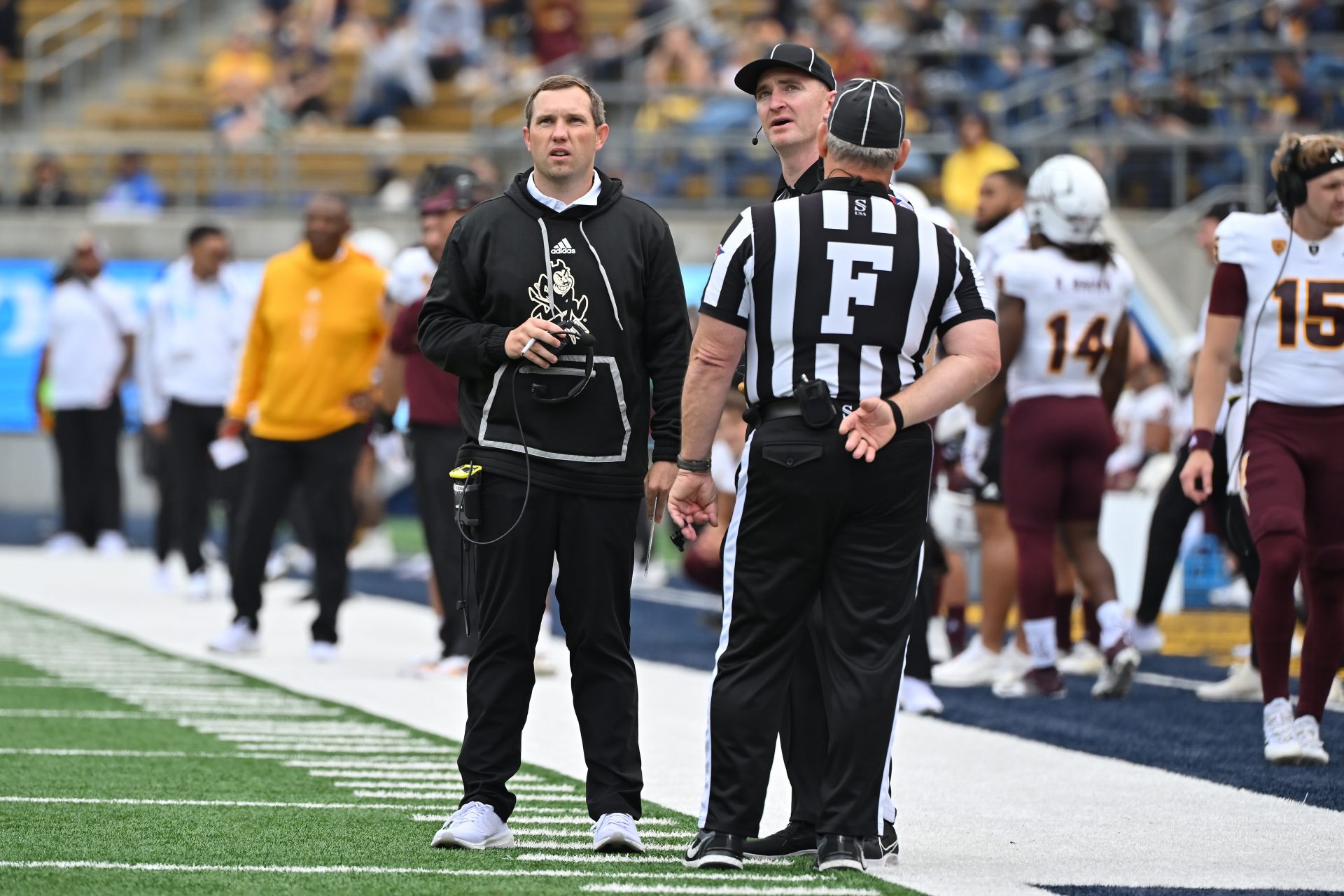Football coaches have one chief goal: Win games. Along the way, they make hundreds of tiny decisions to increase or decrease their chances of winning.
Over the past several decades, it has become easier to track those decisions using win probability. So, what is win probability and how does it affect the decisions coaches make?

What is Win Probability in College Football?
Win probability simply refers to the chance a team has of winning at any point before or during a game, usually calculated as a percentage. Win probability changes after every play, so a team that has a big play usually sees a bump in its mathematical chances of winning.
When it comes to decision-making, win probability can both influence — and be influenced by — a coach. Without the benefit of knowing the outcome of a play before it starts, pro-analytics coaches rely on pre-snap win probability or the chance a team has of winning a game before each snap given the impending decision.
MORE: What Are College Football Analytics?
As a silly example, the decision to punt on second down would lower a team’s win probability when compared to running a normal offensive play. Of course, coaches can’t predict the future. While win probability is always changing, analytically-minded coaches are focused on maximizing pre-snap win probability.
In the above example, a muffed punt on second down would certainly help the offense, but the positive outcome doesn’t justify the coach’s poor decision. Conversely, if the quarterback were to throw an interception on second down, it doesn’t suggest the coach should have punted instead.
By considering pre-snap win probability when making decisions, coaches can maximize their chances of winning. The outcome isn’t guaranteed, but by using the available data, coaches can increase their chances in close games.
How Does Pre-Snap Win Probability Influence Coaches’ Decisions?
Pre-snap win probability is calculated by considering two simple variables: the odds of “succeeding” on a play and the impact of success or failure on that play on a team’s overall chances of winning.
This should make some intuitive sense. Teams will go for it on fourth down more often on fourth-and-1 than fourth-and-10 because the odds of success are higher on the former than the latter. Similarly, teams will go for it more often when losing late in games than when they are winning early in games because the impact of succeeding is high and the impact of failing is lower.
Analytically-minded coaches will usually make the decision that gives them the highest expected chance of winning. They can’t predict the outcome of a play, but they can use historical data to have an idea of the chances of success and failure.
How to Calculate Win Probability Before a Decision
By using a small amount of middle school math and the historical data available to use on the internet, we can calculate the optimal decision for any given choice.
Simply speaking, the way to determine an optimal decision is to multiply the chance of success by the difference in win probability between failure and success then add that number to the win probability of failure.
This gives an expected win probability of any decision. Doing this for each available choice (punt, kick or go on fourth downs and 2-point conversions and extra points after touchdowns) gives an expected win probability for each choice. The choice with the highest expected probability is the correct choice.
For example, let’s say a coach is facing a fourth and 3 at the opponent’s 27. A coach has two decisions: kick or go. If the team is down 4 with a minute left, it’s an obvious go, because the impact of a successful field goal is minimal in a “touchdown or lose” situation.
But let’s say the win probabilities given success for a field goal and first down are 82 and 85%, respectively. The win probabilities given failure of either play are 71 and 70% (Because a missed field goal, would give the opponent the ball at the 34, seven yards ahead of where the ball would be placed on an incomplete pass or run for no gain).
In college, the success rate of a 44-yard field goal is about 75% while the probability of success on 4th & 3 is about 50%.
The mathematical inputs are as follows:
Field goal: (.75)(.82-.70)+(.70) = 79% expected win probability
Go: (.50)(.85-.71)+(.71) = 77% expected win probability
Here, the coach should kick.
The mathematical process is always the same, only the situation and available information change. In the above example, if the offense has a Heisman-winning quarterback and a kicker who has missed half of his 40-yard field goals, the success probability inputs would change, but not the impact of success or failure.
Conversely, if this was a late-game situation in which the offense trailed by four, the impact of success or failure would be different, but the probability of success remains the same.
This can be done for any situation in any game, but is generally used in fourth-down situations and when deciding whether to kick an extra point or go for two after a touchdown.
Teams typically use computer programs that can run simulations quickly as situations change. By using this process coaches can make sure they are making the correct decisions, given the information available to them at the time.
Miss any action from the top college QB Rankings during the 2023 football season? Want to track all the movement with the college football’s transfer portal? College Football Network has you covered with that and more!

